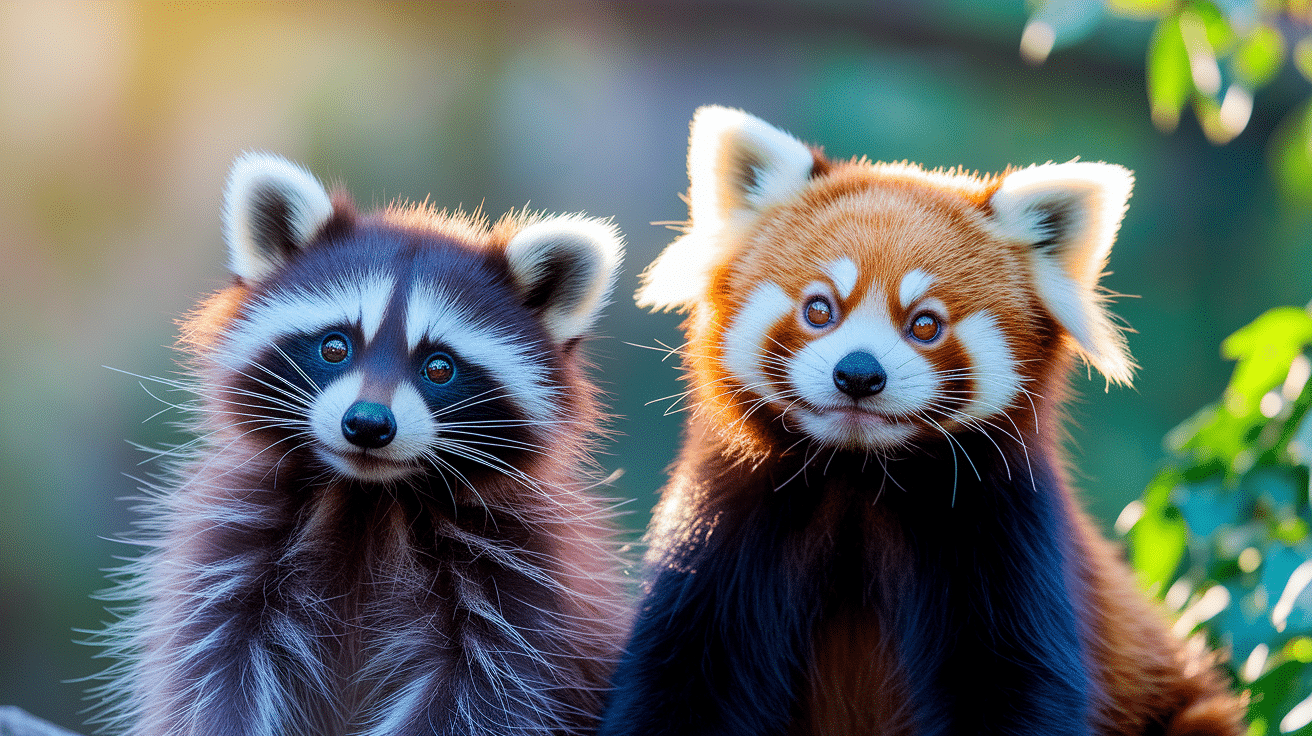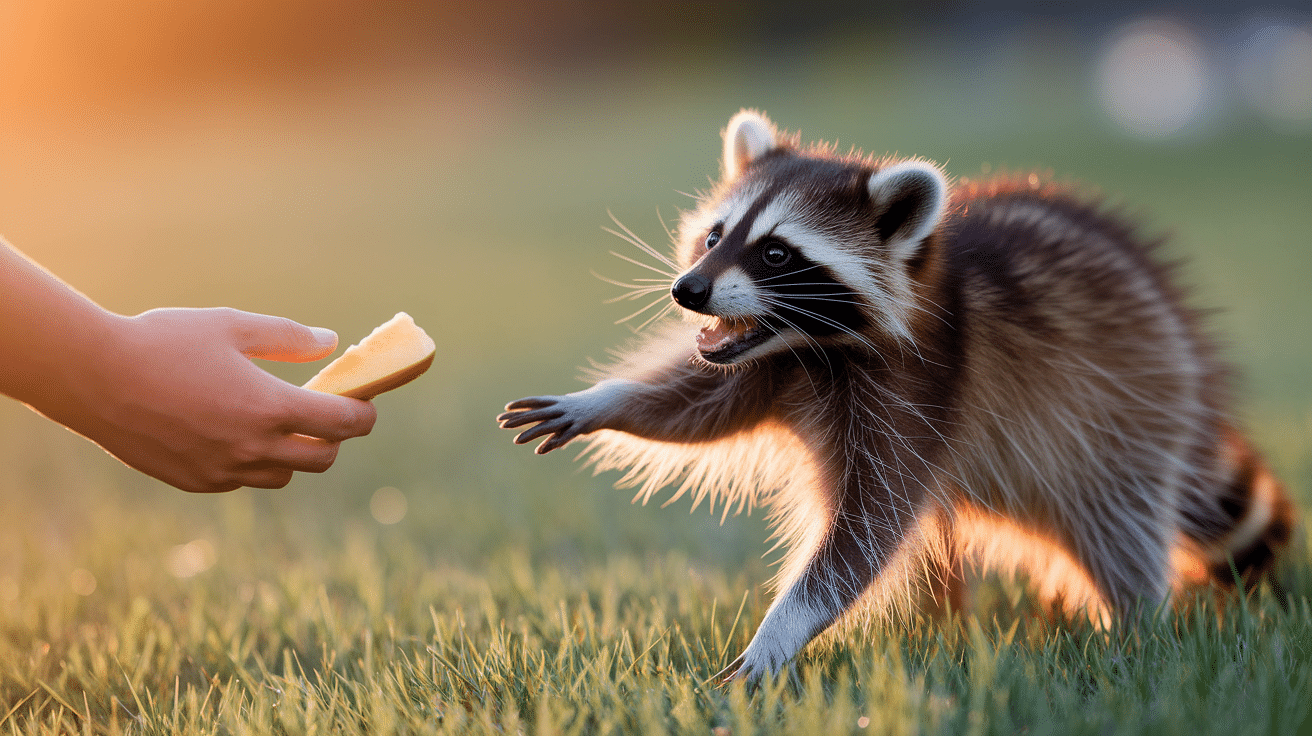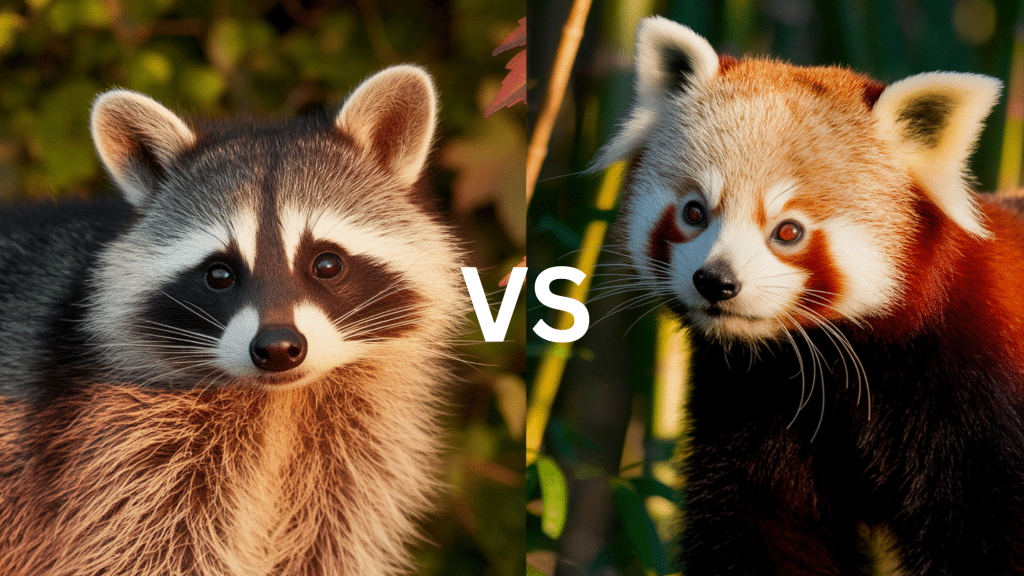Have you ever seen a picture of a red panda and thought it was a raccoon?
These two furry animals look remarkably alike, and many people often confuse them. With their ringed tails and cute faces, it’s easy to see why there’s so much confusion.
We are going to show you exactly how to tell these two animals apart. By the end of this blog, you’ll know the key differences in their looks, where they live, what they eat, and much more.
Are Red Pandas and Raccoons Related
Red pandas belong to their own unique family called Ailuridae. They’re actually more closely linked to weasels and ferrets than to raccoons.
Scientists used to think they were related to giant pandas because they both eat bamboo; however, DNA testing has shown that this isn’t true.
Raccoons are part of the Procyonidae family, which includes coatis and ringtails. Their closest relatives are these animals, not red pandas.
These two unrelated animals developed identical features because these traits helped them survive in their environments.
Physical Characteristics

It’s easy to spot the differences between red pandas and raccoons when you compare their key features side by side.
| Feature | Red Panda | Raccoon |
|---|---|---|
| Size | 8–17 pounds, about the size of a large house cat | 10–30 pounds, typically larger than red pandas |
| Fur | Reddish-brown with white face markings and dark tear tracks | Grayish-brown with a black “bandit mask” across the eyes |
| Tail | Long, bushy, with 6 yellowish-red or buff rings | Bushy, with 5–7 black and gray rings |
| Legs | Short legs with specialized wrist bones (“false thumb”) for gripping bamboo | Short legs; no specialized wrist bone for bamboo |
| Ears | Rounded, sitting on top of the head | Pointed, positioned on the sides of the head |
| Snout | Short snout | Longer snout |
| Paws | Not particularly dexterous, but have “false thumbs” for grasping bamboo; semi-retractile claws | Front paws are incredibly dexterous, functioning almost like hands |
Diet and Feeding Habits
Red pandas are super picky eaters. They love bamboo, which makes up about 95% of their diet. Their bodies have adapted to digest this tough plant, and they spend up to 13 hours each day eating it.
They mainly eat the leaves, not the stalks, unlike giant pandas, and occasionally munch on berries, fruits, mushrooms, and sometimes bird eggs or small insects for extra protein.
Raccoons, on the other hand, will eat almost anything they can get their paws on. They’re true omnivores and excellent scavengers.
In the wild, they feast on fruits, nuts, seeds, insects, frogs, crayfish, eggs, and small animals. While in urban areas, they’re famous for raiding trash cans for leftovers.
Interaction with Humans

These two furry creatures have very different relationships with people. Red pandas need our help to survive, while raccoons have figured out how to live with us:
Red Pandas with Humans
- Red pandas are shy animals that rarely interact with humans in their natural habitat.
- They’re found in remote mountain forests of Asia, far from most human settlements.
- They are not well-suited as pets and are protected by law in most countries.
- Red pandas are endangered, with fewer than 10,000 left in the wild due to habitat loss.
Raccoons with Humans
- Raccoons have adapted incredibly well to human environments.
- They often live in cities, suburbs, and rural areas alongside people.
- Known for raiding trash cans, pet food bowls, and garden crops.
- While they look cute, raccoons can carry diseases and shouldn’t be touched.
How to Tell Them Apart
Red pandas have reddish-brown fur and live only in Asian mountain forests, while raccoons have grayish-brown fur and might be visiting some backyards tonight.
| Feature | Red Panda | Raccoon |
|---|---|---|
| Color | Reddish-brown | Grayish-brown |
| Face | White faces with tear tracks | Black “bandit mask” |
| Size | Cat-sized (8-14 pounds) | Larger (10-30 pounds) |
| Location | Native to Asia | Found throughout North America |
| Activity | Active at dawn/dusk | Nocturnal |
Fun Facts About Red Pandas and Raccoons
Red Pandas:
- They are excellent climbers and spend most of their time in trees.
- Red pandas have a “false thumb,” an extended wrist bone that helps them grip bamboo.
- Despite their name, they are not closely related to giant pandas, and they belong to a different family.
- They can rotate their wrists and even use their front paws as if they were hands.
Raccoons:
- Raccoons are known for their front paws, which are almost as nimble as human hands.
- They have an incredible sense of touch, often feeling around in the dark for food.
- The black “bandit mask” on their face isn’t just for show; it helps reduce glare and improves their night vision.
- Raccoons can open locked doors and even car windows, thanks to their cleverness.
Conclusion
That wraps up our comparison of these two masked critters. Red pandas stick to munching bamboo in Asian mountain forests, while raccoons are the neighborhood night raiders.
Next time you spot a masked animal, you’ll know if it’s a red panda at the zoo or just a local raccoon checking out your backyard.
If you enjoyed learning about these animals, why not share this with a friend who struggles to tell them apart? Or better yet, tell me about your own raccoon stories in the comments.















